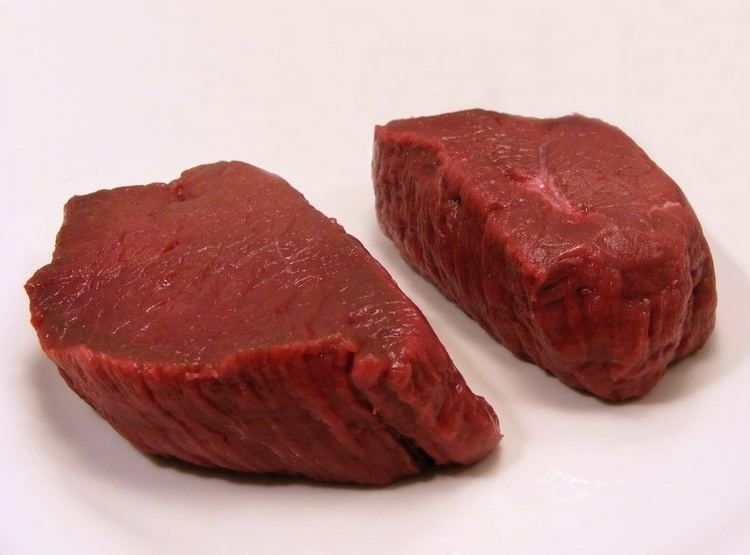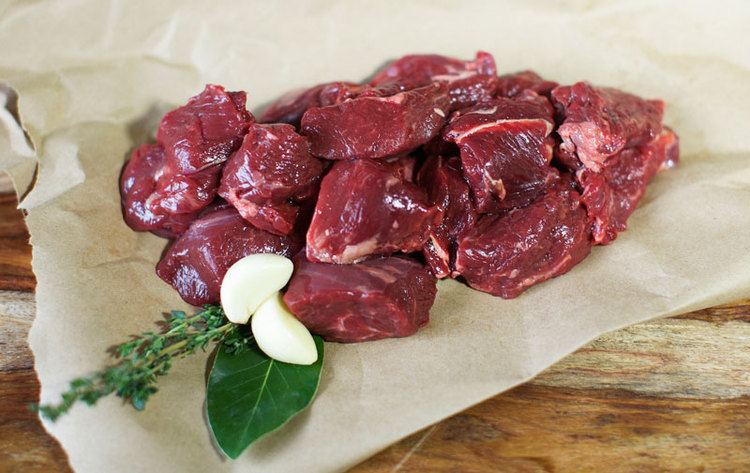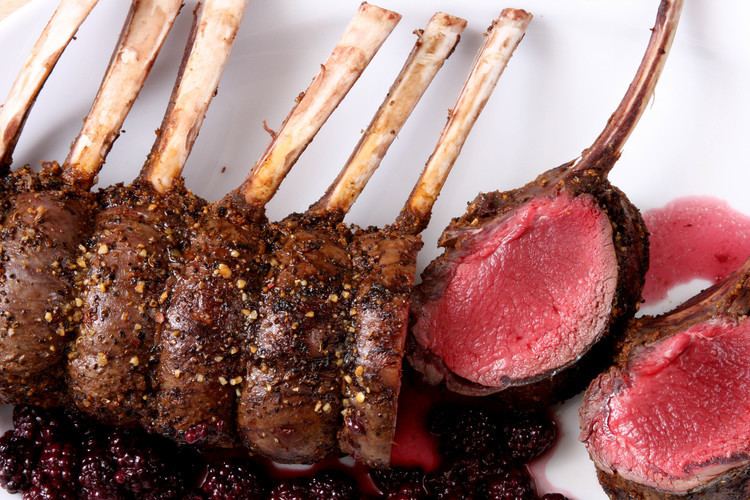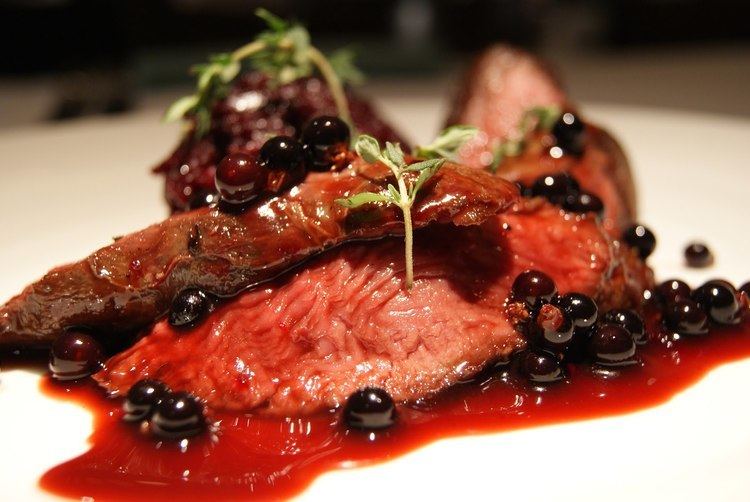 | ||
Halal venison masala gordon ramsay
Venison is the meat of a deer. Venison can be used to refer to any part of the deer, so long as it can be consumed, including the flesh and internal organs. Venison, much like beef, is categorized into specific cuts, including roast, sirloin, and ribs.
Contents

Etymology

The word derives from the Latin venari (to hunt or pursue). This term entered English through Norman in the 11th century, following the Norman invasion of England, and the establishment of Royal Forests.
Definition

Venison originally described meat of any game animal killed by hunting, and was applied to any animal from the families Cervidae (deer), Leporidae (hares), and Suidae (wild pigs), and certain species of the genus Capra (goats and ibex). In Southern Africa, the word venison refers to the meat of antelope. There are no native Cervidae in sub-Saharan Africa.
Food

Venison may be eaten as steaks, tenderloin, roasts, sausages, jerky and minced meat. It has a flavor reminiscent of beef, but is richer and can have a gamey note. Venison tends to have a finer texture and is leaner than comparable cuts of beef. However, like beef, leaner cuts can be tougher as well.

Organ meats of deer are eaten, but would not be called venison. Rather, they are called umbles (originally noumbles). This is supposedly the origins of the phrase "humble pie", literally a pie made from the organs of the deer.
Venison is widely considered by modern nutritionists to be a very healthy meat. Since wild deer are not confined to limited spaces and eat a natural diet, their meat is natural and free of artificial hormones. Venison is higher in moisture, similar in protein and lower in calories, cholesterol and fat than most cuts of grain-fed beef, pork, or lamb. When considering the environmental effects that result from raising livestock, deer meat is also a low-impact food. Since it is unknown whether chronic wasting disease (CWD), a transmissible spongiform encephalopathy among deer (similar to mad cow disease), can pass from deer to humans through the consumption of venison, there have been some fears of contamination of the food supply. Farmers have had tests developed especially for the particular species they raise to obtain better results than those used on cattle.
Venison jerky can be purchased in some grocery stores or ordered online, and is served on some airlines.
Venison burgers are typically so lean as to require the addition of fat in the form of bacon, olive oil or cheese, or blending with beef, to achieve parity with hamburger cooking time, texture, and taste. Some deer breeders have expressed an interest in breeding for a fatter animal that displays more marbling in the meat.
Kosher
Venison can be kosher, as deer are ruminants and possess completely split hooves, two of the requirements for mammals, and indeed is available kosher in places such as Israel, New York City, and Chicago..
Europe
Historically, venison was considered to be a status symbol among many Europeans. In England, for example, hunting rights were restricted in an effort to preserve property rights. As a result, the possession and sale of venison was tightly regulated under English law. Venison is widely available in European supermarkets through the traditional hunting season, October to December. The main cuts available to European consumers are derived from the saddle and the hind leg.
North America
In the United States, venison is less common at retail due to the requirement that the animal be first inspected by USDA inspectors. There are very few abattoirs which process deer in North America, and most of this venison is destined for restaurants. Most venison sold through retail in the United States comes from New Zealand and Tasmania. It is available through some high-end specialty grocers and some chains which focus on more 'natural' meats. Non-retail venison is often obtained through hunting and self-processing or contracting to small meat processing facilities to do the processing for the hunter, but sale of the finished meat is usually illegal.
Arby's gained some attention in October 2016 when word leaked through social media that they were about to test a venison sandwich. Arby's later confirmed the offering, selecting 17 stores in Georgia, Michigan, Minnesota, Pennsylvania, Tennessee, and Wisconsin (all major deer hunting states) to offer it during a four-day test during those states' respective hunting seasons. Both due to curiosity and heavy demand from hunters, the sandwiches sold out in all markets on the first day of the test.
Venison consumption often gets stigmatized by reference to the 1942 Disney movie Bambi (based on an earlier book) which personifies wild deer and includes a scene where the title character's mother gets shot and killed by a human hunter. The film implicitly portrays hunters as being cold-hearted and anti-conservationist. Controversy was somewhat renewed when Disney released a long-awaited sequel to the movie, Bambi II, in 2006. Nonetheless, there has been an increase in the acceptance and promotion of venison in recent years due to the cited nutritional benefits of wild meat and a growing trend toward the belief that hunting for meat is more environmentally friendly than the production of meat through factory farming.
